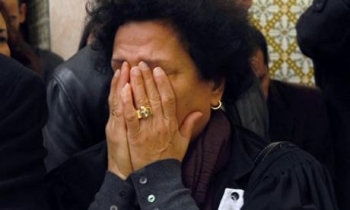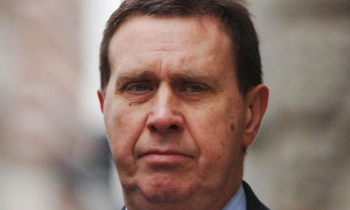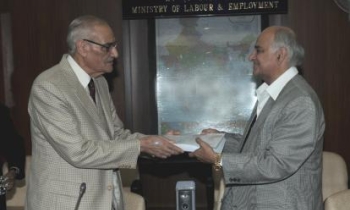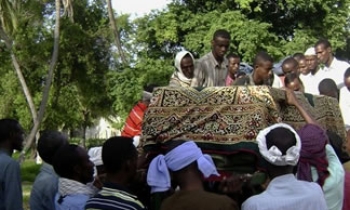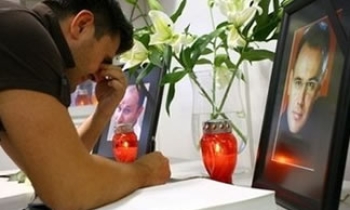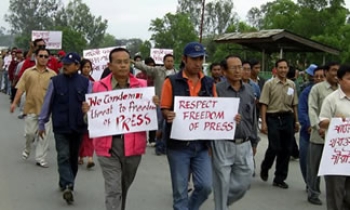On a mid-November day in 2006, a cleaning lady found the bloodied, lifeless corpse of journalist José Manuel Nava in his Mexico City flat located on Warsaw Street in the Juarez district of the capital. He died, according to police reports, from a savage knife attack by an unknown assailant. This occurred a week after he published a book very critical of the outgoing president, Vicente Fox, and some members of Mexico's business elite.
The mysterious murder of the journalist and its unclear motive ended another chapter in the long, glorious, and at times sordid saga of what, historically speaking, was one of Mexico's most famed newspapers: El Excelsior. The newspaper's downfall and that of Nava seem in retrospect inextricably linked. Both the man and the newspaper were considered to be institutions in the country and, in a way, shared a common fate.
In his book, El Asalto Final (The Final Assault), launched nearly a week before he died, Nava writes: "An internal betrayal, big money and the complicity of Vicente Fox's government caused the collapse of the newspaper, which since the fall of Regino Díaz Redondo for five years, has struggled to survive to maintain a source of employment for the 1,400 members of the cooperative." (Redondo was editorial director from July 1976 to October 2000. The newspaper was founded as a "cooperative" and in theory was collectively owned by its entire staff of reporters and employees.)
These incendiary charges were made by a man who was associated with the paper's history for over 25 years. Nava covered wars, was a former El Excelsior Washington correspondent for 22 years, and finally was named its editor-in-chief in 2004. He left after the daily ceased to be owned by its employees and was sold to private interests for the first time in its 87-year history.
The highly respected veteran reporter hinted at improprieties surrounding the newspaper's operations. This surely irked some powerful people in Mexico. The book's premise is this: The internal corruption, fraud, and infighting that reigned within the newspaper for years was made worse by interference from "outsiders" and by the complicity of certain members of the editorial staff who systematically and deliberately sabotaged the newspaper. This hastened the demise of the daily.
'El Excelsior': From a Troubled Past to an Uncertain Future
Despite being mired in internal strife and uncertainty for nearly a decade, the newspaper was finally sold in 2004. Before that, it was for years burdened with huge debts and falling circulation. Official sponsorship such as government ads placed in "its" newspaper by the ruling Institutional Revolutionary Party (P.R.I.) dried up when the new National Action Party (P.A.N.) presidency assumed power. The newspaper survived the 1990s' by mortgaging its headquarters, considered prime real estate, to its creditors.
For years, it hardly managed to pay its 1,400 staff members who were known as the "collective." This venerable institution of Mexican journalism teetered on the verge of bankruptcy before being sold to Olegario Vázquez Raña at the height of its ongoing financial crisis. Raña is a wealthy business tycoon who owns a chain of luxury hotels and a private hospital in Mexico City. He supposedly made attempts in "backroom" deals with the editors at the time to purchase the newspaper in 2000. The deal fell through after the proposal was voted down by the collective and its members at an emergency assembly meeting in October of the same year.
The failed attempt to sell the paper to outside interests, in addition to allegations of fraud against its former editorial director, Redondo, resulted in his sudden departure. A new team took over and in January 2003, tried to sell the newspaper to the ex-director of Interpol and businessman Miguel Aldana for $150 million. That deal also fell through.
2000 Election: A Prelude to the Downfall of an Institution in Mexican Journalism
The newspaper, during the 2000 presidential campaign, was less than favorable in its portrayal of the eventual winner, Vicente Fox. Historically El Excelsior was closely linked to the ruling P.R.I. and in editorials at the time openly favored the P.R.I.'s man, Francisco Labastida to win the race. (Uno Mas Uno, another Mexican daily also closely aligned to the P.R.I. suffered a similar fate after Fox's 2000 election. It saw its circulation fall and was mired in financial woes during the Fox years.)
On June 7, the paper published the names of "presumed" generous financial backers of the Vicente Fox campaign. On the list were names of major foreign multinational corporations that had "every possibility of being major supporters of Fox's presidential bid" (La Palabra.com, Nov. 6, 2000). This apparently riled the winning candidate. The origin of the list of names was questionable. In the end, the newspaper was unable to prove the authenticity of either its source or the alleged links between contributors to the P.A.N. candidate. Whatever the merits or veracity of these claims may have been, two things were certain: El Excelsior made many enemies among Mexico's future ruling class at a time when it needed them most, and secondly, from then on, the daily was in constant crisis mode throughout President Fox's six-year term in office.
A Brief History of 'El Excelsior'
Excelsior was founded on March 18, 1917, by Rafael Alduncin. In its glory days, it was run by Julio Scherer Garcia, its editorial director from August 1968 to July 1976. Scherer Garcia was a man who for many people of his generation personified the "El Excelsior myth" and the best tradition of Mexican journalism at the time. In Scherer Garcia's words, journalism is "a problem of balance and counterbalance … an acrobatic art with networks of protection" ("Un Mito Llamado Excelsior," Etcetera, July 2001).
He rose to journalistic fame partly from his editorial stewardship of the daily during the notorious events of Oct. 2, 1968. That day, government troops massacred hundreds of student protesters at la Plaza de Tres Culturas in Mexico City. While at the newspaper's helm and despite government interference, El Excelsior meticulously documented the events, days before and after the tragedy. The newspaper once known as the "Le Monde of Mexico" distinguished itself from other newspapers because of its editorial excellence during this crisis period.
Very high caliber reporting matched with an array of prestigious collaborators and columnists such as Elena Poniatowska, Julio Cortázar, Carlos Monsiváis, and Enrique Krauze made it a superb read. Excelsior's reporters back then enjoyed unprecedented access to the circles of power.
Sherer Garcia, thanks mainly to his charm and charisma, established close interpersonal ties to Mexico's presidents. These insider's views from Los Pinos (the president's official residence) were reflected in the excellent editorial content and interviews that appeared in the daily.
Scherer Garcia was knocked off his editorial perch on July 8, 1976. By then the newspaper had fallen out of favor with the authorities. Considered "troublesome" it "was effectively silenced by government directed employees (within the paper) and its editor Julio Scherer Garcia, was ousted along with most of the independent reporting staff" (Council on Hemispheric Affairs press release archives from 1980). This, as it turned out, was neither the first nor the last time the paper fell victim to internal dissent and skullduggery.
The firings at the editorial department were apparently due to the critical stance the newspaper took in its reporting on Mexican foreign policy, the repression of trade unions by the government and other issues that embarrassed the country's leadership and its president, Luis Echeverría.
In a communiqué published in the wake of the forced resignations at the newspaper, the new leadership of its cooperative and staff explained that Scherer Garcia and his colleagues left after a "democratically" taken decision and without any interference or pressure whatsoever from outside forces. Still today, it is believed by many in the Mexican media and intellectual circles that the editor's sudden dismissal was fomented by the president himself.
At that point, Regino Díaz Redondo was appointed to succeed Scherer Garcia. He ran, or rather ruled over, the newspaper. Under his reign in the 1980's, the newspaper's reputation for editorial excellence was maintained. However, his authoritarian style and rumors of financial mismanagement over the years inevitably led to chronic debts and discontent among the reporters and staff.
The newspaper was and still is no stranger to behind the scenes intrigues and Machiavellian maneuvers. During my international internship at El Excelsior in 2000, I experienced a turbulent period in the newspaper's history. Its director, after accusations of embezzling money from the employees' pension fund, was also ousted in a manner even more humiliating than that of his famed predecessor.
A colleague of mine at the foreign desk succumbed to a heart attack from the stressful working conditions at the time. The atmosphere at the newspaper was dreadfully grim and tense. In attendance at one of the many assembly meetings on the top floor of its headquarters, I witnessed a raucous meeting in which fellow journalists hurled slurs and accusations of theft and fraud at each other. As the future and fate of the newspaper was being deliberated, I stood across the street unable to enter the newspaper and watched as loyalists of the former and disgraced editor-director Redondo attempted to regain control of the newspaper by forcing their way into the building. They were tear-gassed by security forces outside the entrance.
All this bad news made for excellent copy and its rivals seemed to revel in covering every step of the paper's internal hemorrhaging until the final sale occurred in 2004. The newspaper was reborn like a phoenix from its ashes as El Nuevo Excelsior that same year. It remains to be seen if it can prosper under its new owner and publisher, Olegario Vázquez Raña. Editorially and critically speaking, it bears little resemblance to its former mythical self.
As for José Manual Nava, he left behind his books and articles as a testament to Excelsior's former glory.


